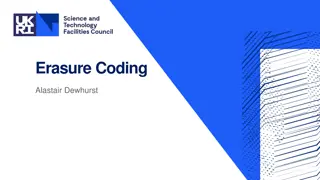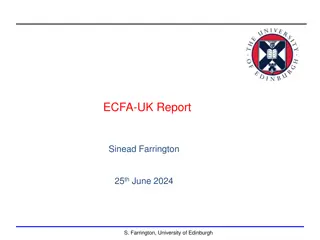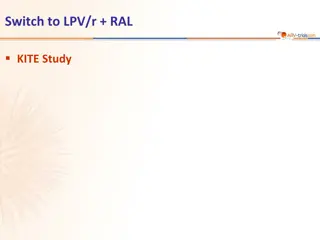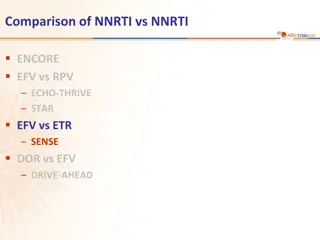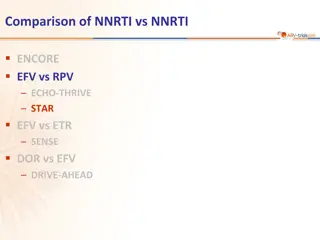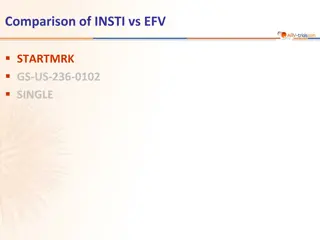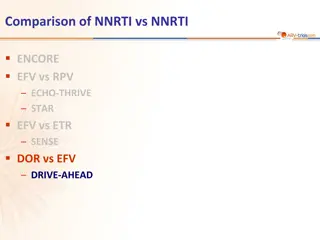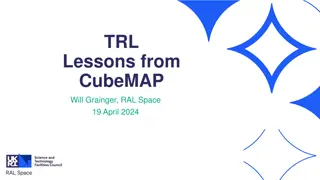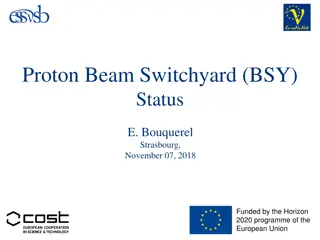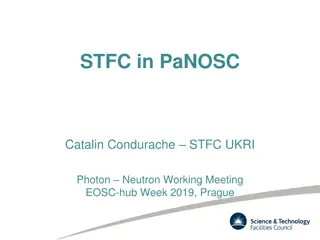Understanding Erasure Coding in Storage Systems
Erasure Coding is a data storage technique that enhances fault tolerance by breaking files into chunks and generating additional pieces for reconstruction. This technology, exemplified by systems like Ceph, offers more robust data protection than traditional methods like RAID or replication. Erasure
0 views • 10 slides
Overview of ECFA-UK: European Committee for Future Accelerators and its Activities
ECFA-UK, the European Committee for Future Accelerators, consists of members from prestigious institutions in the UK like Oxford, Edinburgh, Bristol, RAL, Glasgow, Cambridge, and UCL. The committee's main objective is to assess and ensure the well-being of the particle physics field in Europe and en
1 views • 11 slides
Switch to LPV/r + RAL Study: Efficacy and Safety Findings
This study, named KITE, focused on switching to LPV/r and RAL treatment in HIV patients without virologic failure. The trial included 40 participants continuing triple therapy, with primary endpoints being HIV RNA levels and event-free treatment failure. Results showed high virological response rate
0 views • 6 slides
Comparison of NNRTI vs. NNRTI in SENSE Study
The comparison between Etravirine (ETR) and Efavirenz (EFV) in the SENSE Study showed differences in neuropsychiatric adverse events, treatment response, and patient characteristics. ETR with 2 NRTIs resulted in fewer drug-related adverse events than EFV with 2 NRTIs. ETR also showed better response
0 views • 7 slides
Comparison of NNRTI vs. NNRTI and RPV/FTC/TDF vs. EFV/FTC/TDF in STAR Study
STAR Study compared the efficacy and safety of RPV/FTC/TDF and EFV/FTC/TDF in treatment-naive HIV patients. The study included 394 participants in each group, assessing HIV RNA suppression rates, CD4 count improvements, treatment responses, and resistance analyses up to 48 weeks. Results showed RPV/
0 views • 15 slides
Comparison of INSTI vs. EFV in STARTMRK GS-US-236-0102
In the STARTMRK study, Raltegravir (RAL) was compared to Efavirenz (EFV) in combination with TDF/FTC for the treatment of HIV. The study aimed to demonstrate non-inferiority of RAL compared to EFV in achieving HIV RNA levels below 50 c/mL. Baseline characteristics and patient disposition were assess
0 views • 12 slides
IPv6 Security and Threats Workshop Summary
David Kelsey from STFC-RAL presented on IPv6 security and threats at the IPv6 workshop pre-GDB at CERN in June 2016. The workshop covered topics such as IPv6 protocol attacks, issues for site network security teams and sys admins, new features of IPv6, security pros and cons, immediate IPv6 concerns
0 views • 29 slides
Comparison of NNRTI vs NNRTI and DRIVE-AHEAD Study: DOR/3TC/TDF vs EFV/FTC/TDF
The comparison study explores NNRTI regimens alongside the DRIVE-AHEAD trial, focusing on DOR/3TC/TDF vs EFV-FTC/TDF. DRIVE-AHEAD assesses the efficacy and safety of DOR in ARV-naïve HIV patients, aiming for non-inferiority based on virologic response, with DOR exhibiting potential neuropsychiatric
0 views • 11 slides
Lessons from CubeMAP: Technology Readiness Levels and Mission Development Insights
Explore the TRL journey of CubeMAP, a mission involving 3.12U satellites for atmospheric chemistry observations. Dive into the history, TRL assessment, and development plan of this collaborative project between GomSpace and RAL Space, unveiling key insights for future missions.
0 views • 12 slides
Proton Beam Switchyard (BSY) Status Summary - Horizon 2020 Programme
A detailed overview of the Proton Beam Switchyard (BSY) Status funded by the Horizon 2020 programme of the European Union. The aim of BSY is to ensure efficient distribution and focusing of the proton beam onto specific targets. The BSY composition includes various systems like deflecting, focusing,
0 views • 12 slides
Managing Viral Load in Patients on ART: Case Study of Nondumiso
Nondumiso, a patient on TDF/FTC/EFV for a year, faces challenges with adherence despite good health and stability. With a VL of 1500, a thorough assessment is needed to address possible causes such as adherence, infections, dosing, interactions, and resistance. Follow-up testing, interventions, and
0 views • 23 slides
Data Infrastructure Initiatives in STFC's PaNOSC Project
STFC is involved in PaNOSC to provide tools for handling large datasets, including data transfer and storage. Initiatives include alpha and beta testing phases for data transfer, storing 1PB of data annually, and setting up a data infrastructure. ECHO, a Ceph Object Store, is provided by RAL and off
0 views • 8 slides
